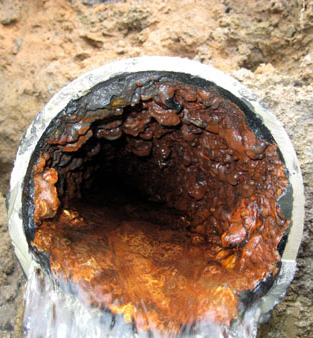Corrosion wears hard on industry
 Industry experts estimate that corrosion costs the Australian water industry $91 million per year.
Industry experts estimate that corrosion costs the Australian water industry $91 million per year.
The report - commissioned by the Australasian Corrosion Association (ACA) – says the industry faces many challenges as a result of ageing infrastructure.
Analysts looked at the corrosion failure causes and costs for pipelines and treatment plants, while suggesting some potential cost reduction strategies to help.
“During a pipeline failure event, there are intangible costs that can have a significant effect upon the wider community, including disruptions due to flooding, road closures and loss of trade. These costs have been estimated at $91 million per annum to the Australian urban water industry,” said the ACA.
“The total estimated annual cost of corrosion to the industry and the wider community in Australia is $982 million, which equates to an approximate annual cost of $60 for every adult in the country.”
The ACA says the water industry tends to run underground pipes until they fail.
“Individual pipe failures are repaired until the failure rate reaches a predetermined level, at which point the entire section of pipeline is replaced,” the group said.
“For smaller pipes this is still considered ‘best practice’ for the industry, but for larger critical pipelines a more proactive approach is being adopted.”
The report recommends water authorities increase pipeline condition assessments to find future failures before they occur.
“Most water utilities have active CCTV inspection programs where internal corrosion of non-pressure sewer pipes can be assessed and repairs, renovations or replacements of these sewers implemented before major collapses occur,” said the ACA.
“Pipe materials such as grey cast iron and asbestos cement make up a large proportion of reticulation pipes in Australia and many of these are reaching a time where replacement will be required.”
The ACA concluded that there are many other assets that fall victim to corrosion, including manholes, sewer vents, tanks, reservoirs, and sewerage and drinking water pumping stations.
“The economic impact of corrosion and its degradation of infrastructure and assets is estimated to be three-to-five per cent of GDP each year.
“This represents an annual cost of many billions of dollars to the Australian and New Zealand economies.”








 Print
Print